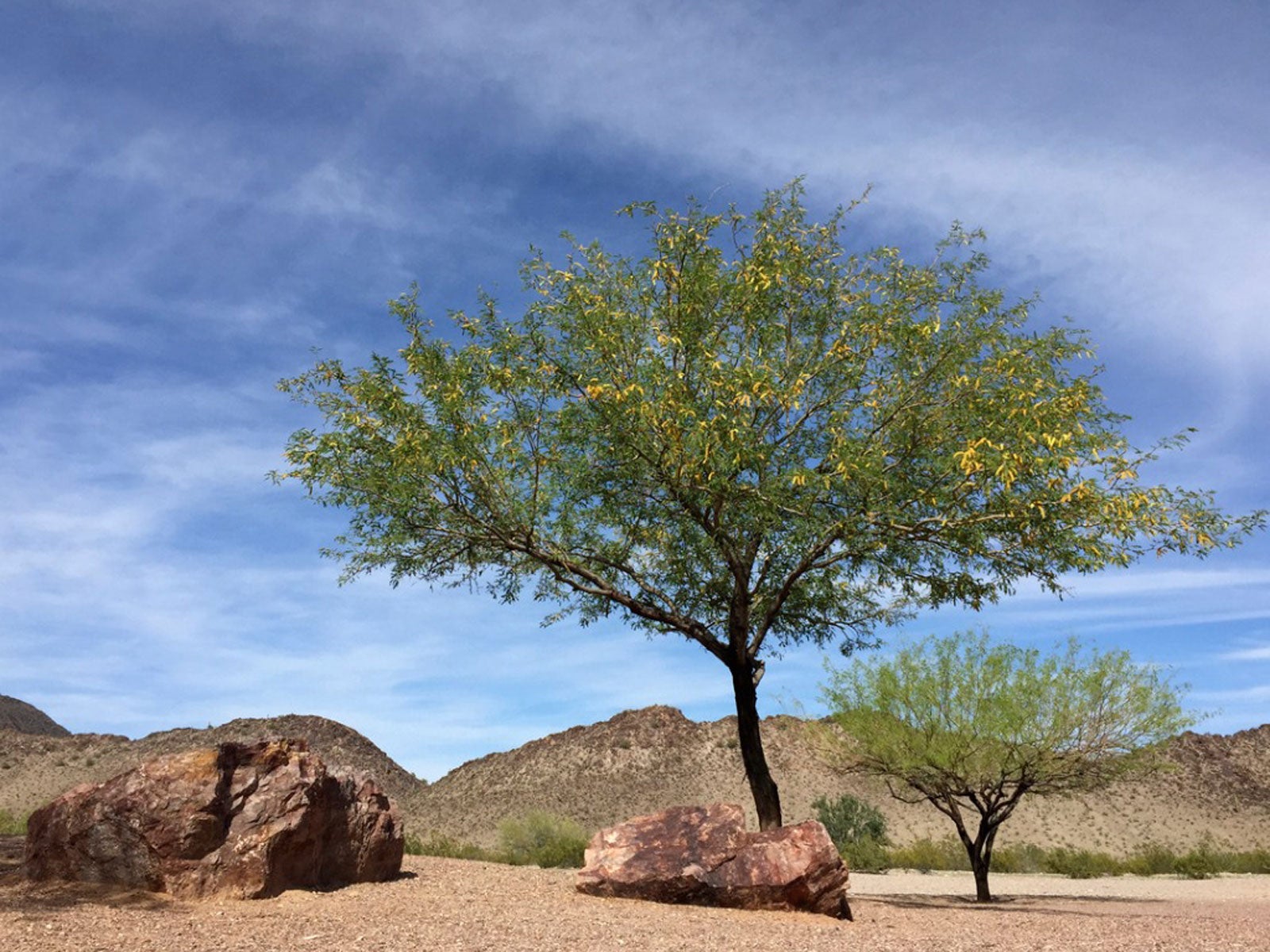Desert Tree Varieties: Trees You Can Grow In The Desert


Trees are a valuable part of any home landscape providing cooling shade, privacy screening, and inviting birds and other wildlife into your yard. If you live in a hot, arid region, you’ll find that some of the most beautiful and interesting trees on the planet prefer this climate.
The key to having happy, healthy trees in a hot, dry region is to select appropriate trees for a desert climate. If you are wondering about trees you can grow in the desert, read on. We’ll help you find desert garden trees perfectly suited to grow in your area.
Types of Desert Trees
Trees you can grow in the desert will be tough and drought-tolerant. This doesn’t mean that they can’t be beautiful as well though. While some desert plants have thick, leathery leaves, you can also find desert tree varieties that offer bright, frilly flowers.
Flowering Trees You Can Grow in the Desert
If you want bright blossoms on your garden trees, no problem. There are many desert garden trees with canopies that fill with flowers in spring or summer.
- One tree to consider is the anacacho orchid tree (Bauhinia lunarioides). Sun-loving and drought-resistant, this lovely tree’s branches fill with orchid-like flowers from spring through summer.
- The blue palo verde tree (Parkinsonia florida) is also very ornamental, its canopy turning bright yellow with spring blossoms.
- If you like the idea of lavender spikes of flowers from summer through fall, consider the chaste tree (Vitex agnus-castus).
- The Texas mountain laurel (Sophora secundiflora) is another of the flowering desert tree varieties. It grows drooping clusters of purple flowers in spring.
- Producing sweet-smelling yellow flowers each spring, the mesquite tree (Prosopis) is another great desert-dwelling tree to consider. Once the flowers fade, they give way to interesting pods.
There are many more types of desert trees to choose between when you are landscaping. If you have a small yard, you’ll want to consider some of the smaller trees. The acacia family, for example, offers several trees that are small, no bigger than 20 feet by 20 feet (6 meters by 6 meters), and evergreen.
Mulga acacia produces puffy yellow flowers several times during the year, including spring and summer. Or check out guajillo acacia (Acacia berlandieri). It grows with multiple stems, has some thorns, and flowers from February to May with attractive seedpods in the summer. Hardy sweet acacia (Acacia smallii) flowers all winter, from late autumn through March. It is quite thorny.
Sign up for the Gardening Know How newsletter today and receive a free copy of our e-book "How to Grow Delicious Tomatoes".

Teo Spengler is a master gardener and a docent at the San Francisco Botanical Garden, where she hosts public tours. She has studied horticulture and written about nature, trees, plants, and gardening for more than two decades, following a career as an attorney and legal writer. Her extended family includes some 30 houseplants and hundreds of outdoor plants, including 250 trees, which are her main passion. Spengler currently splits her life between San Francisco and the French Basque Country, though she was raised in Alaska, giving her experience of gardening in a range of climates.